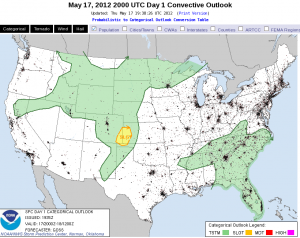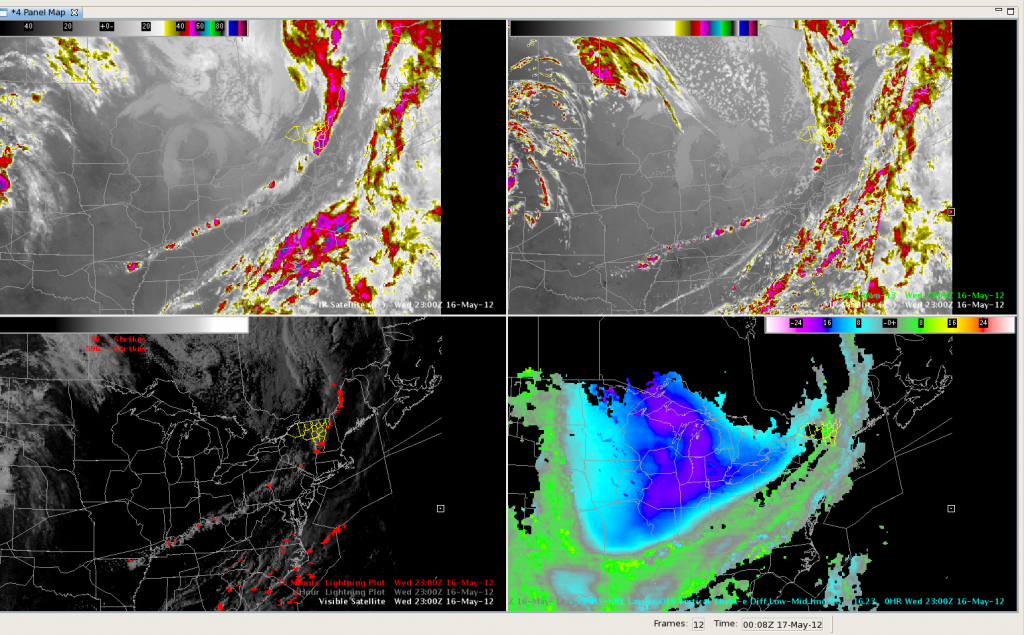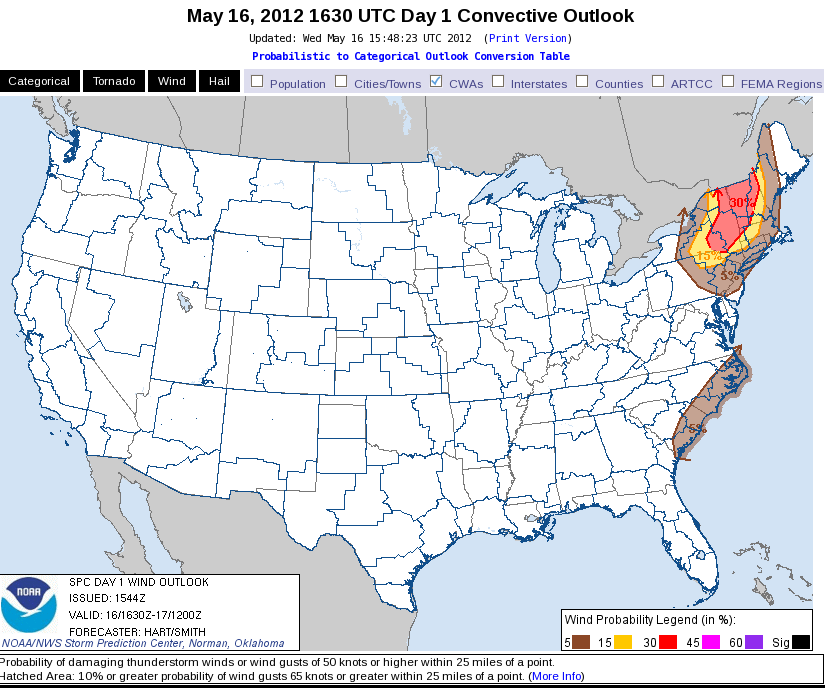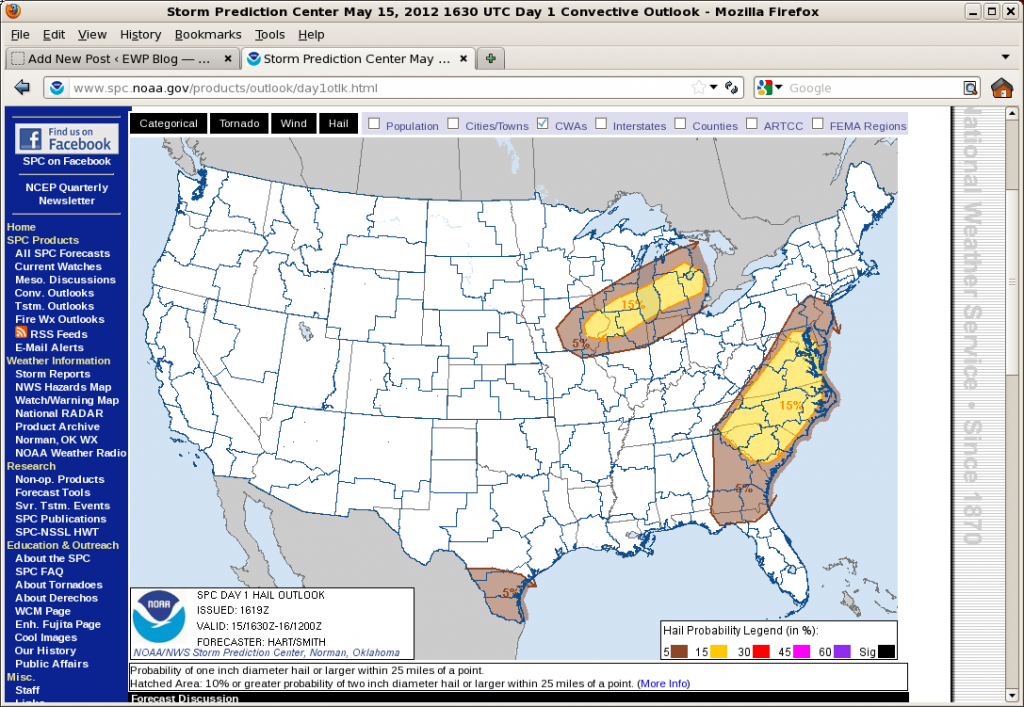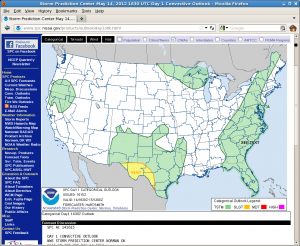For the week of 21-25 May, our distinguished NWS guests will be Matt Hirsch (WFO Phoenix, AZ), Andy Kleinsasser (WFO Wichita, KS), Chris McKinney (WFO Houston, TX), and Gordon Strassberg (CWSU New York City, NY). Other visiting participants this week will include James McCormick (AFWA, Offutt AFB, Omaha, NE), Helge Tuschy (Deutscher Wetterdienst, Germany), Lee Cronce (CIMSS/UW-Madison), Chris Jewett (UAH), and Dan Lindsey (CIRA/CSU).
Focus for day 1 is over the West Texas region; forecasters are currently set up in the Lubbock and Amarillo CWAs. Right now they’re in the process of familiarizing themselves with both the regional weather and AWIPS2.
Finally caught an event pre-CI and over the OUN-WRF domain, so much of the focus for the forecasters to begin with are on the high-resolution models, CIRA simulated satellite from the NSSL-WRF and satellite CI/CTC products.
Weaker storms from this morning have moved SE out of the domain leaving a number of outflow boundaries across the region. The high-res models seem a bit mixed regarding the CI time, anywhere between 2100-0000 UTC (OUN-WRF earlier/NSSL-WRF later). The HRRR, OUN-WRF, and TTU-WRF all seem to briefly include weakly rotating supercells for a short time (with large hail and wind the primary concern) before merging into a SE moving line.

K. Calhoun, EWP 2012 Week 3 coordinator


